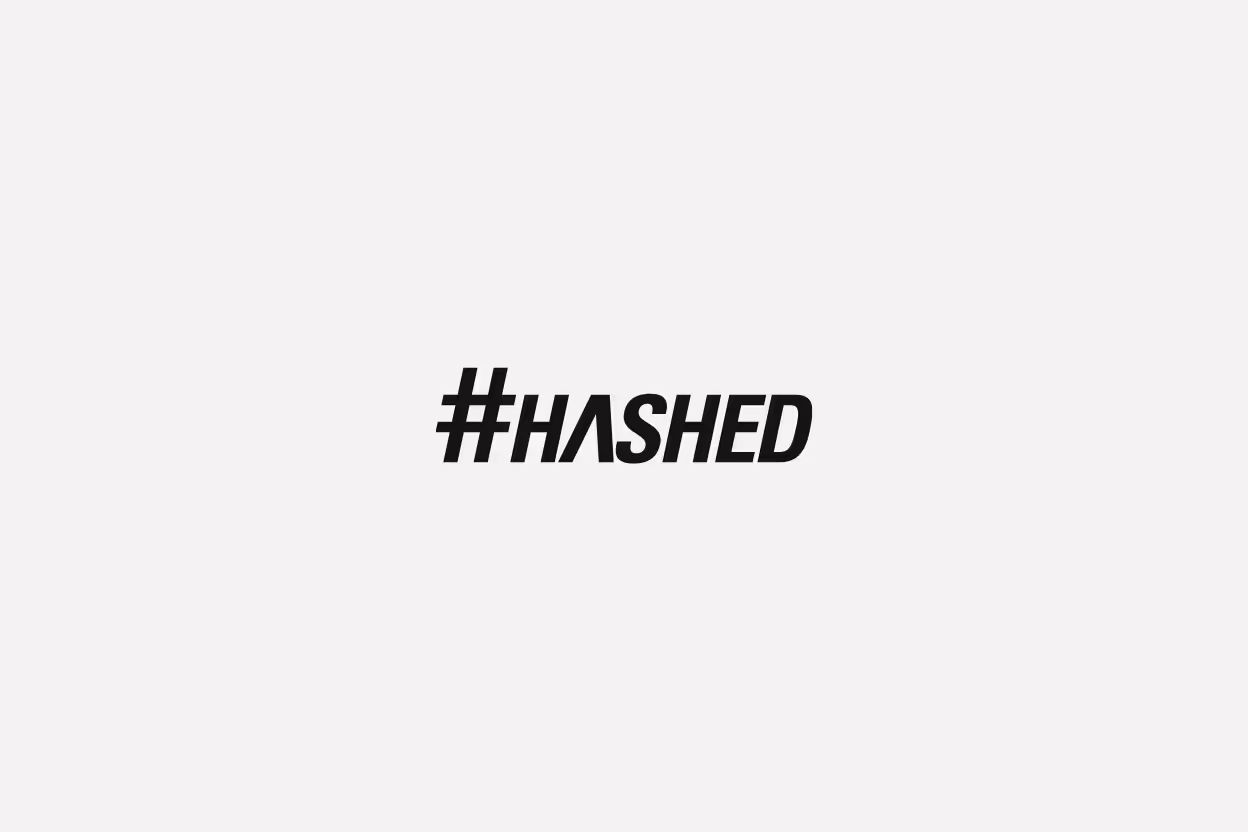Burn rates show how quickly a crypto project removes tokens from circulation, making them a clear signal of token scarcity. In this space, burn rates act as public alpha—an open window into a project’s economic health and market strategy. Crypto founders, blockchain innovators, and investors all watch burn rates closely because they reveal how supply is managed and hint at network vitality.
Since burns happen on-chain and are publicly verifiable, they bring transparency to tokenomics that’s hard to fake. This transparency helps investors gauge whether a project's approach to scarcity and inflation control is genuine or just hype. Beyond influencing price, burn rates can indicate real network usage and demand—key factors for anyone involved in Web3 projects or investing in crypto tokens. Understanding burn rates is essential for making informed decisions in this constantly shifting ecosystem.
The Mechanics of Token Burn Rates
Understanding how tokens are burned and why is essential for both founders and investors. Token burn rates aren’t just about reducing supply—they also shape how the market perceives a project’s long-term value and commitment. Different types of burns serve distinct purposes and produce varying effects on the circulating supply and investor confidence. Let’s unpack these burn methods and see how they influence tokenomics in action.
Types of Token Burns and Their Effects
Token burns generally fall into a few categories, each with unique impacts on the token ecosystem. Here’s a look at the main types and what they mean:
- Protocol Fee Burns
This type happens automatically when users transact on a network. A portion of transaction fees is permanently removed from circulation (sent to a burn or “black hole” address). Ethereum’s EIP-1559 is a prime example. This mechanism links network activity directly to token scarcity. More transactions mean more tokens burned, which aligns supply reduction with actual usage. Investors often see this as a strong sign of economic activity and sustainability. - Scheduled Burns
Some projects set a predetermined schedule for burning tokens. Binance’s quarterly BNB burns follow this model. These burns are planned events, clearly communicated to the community, and often tied to project milestones or revenue. Scheduled burns provide predictability and transparency, reassuring investors that scarcity tactics are consistent and deliberate. - Community-Driven Burns
In these cases, the community actively participates in burning tokens. Often, projects will allocate tokens that holders can choose to burn themselves or organize campaigns to burn tokens collectively. Shiba Inu is known for this approach. Community-driven burns foster engagement and a sense of shared ownership. They can help create bullish sentiment but also risk becoming one-off events if not sustained. - Other Types
Less common are burns tied to specific mechanisms like Proof of Burn (PoB), where miners or validators must destroy tokens to participate. Or emergency burns, which occur after hacks or token recovery efforts. These burns usually have niche impacts or are reactive rather than strategic.
How do these burns affect supply and perception?
- Burned tokens are removed permanently, lowering total circulating supply. This scarcity can push prices up if demand holds steady.
- Regular, transparent burns build trust by showing the project’s commitment to managing inflation.
- Linking burns to real activity (e.g., transaction fees) adds credibility. It suggests the project’s ecosystem is active, not just manipulating numbers.
- Community involvement can boost enthusiasm, but inconsistent or hype-driven burns risk investor skepticism.
Case Study: Shiba Inu’s Volatile Burn Rate
Shiba Inu offers a clear real-world example of how burn rates can fluctuate sharply yet remain an integral part of tokenomics.
Shiba Inu’s community-driven approach means burn volumes vary daily. Some periods see large burn spikes driven by coordinated efforts from holders and third parties, while others show pronounced slowdowns. For example, recent months demonstrated dramatic swings in burn activity, with some days burning hundreds of millions of SHIB tokens and others just a fraction of that.
What does this volatility signal?
- Market sentiment and engagement shift constantly. When burns spike, it often coincides with heightened enthusiasm or campaigns promoting scarcity. Conversely, low burn days indicate cooling interest, but don’t necessarily signal failure.
- Scarcity builds over time despite fluctuations. Even with ups and downs, cumulative burns continue removing supply. This ongoing effort supports long-term scarcity.
- Investors read volatility with nuance. Sharp drops in burn rate might cause short-term concern. Yet understanding the bigger picture reveals burns as a persistent supply control tool rather than a single isolated event.
In Shiba Inu’s case, the burn mechanism acts almost like a heartbeat, with pulses of intense activity followed by quieter periods. This pattern highlights why it’s important to analyze burn rates over weeks or months, not just daily snapshots.
Burn rates give investors a live look at a project’s supply management and community involvement. With Shiba Inu showing that burns can fluctuate dramatically, it’s clear that ongoing transparency and context are key to interpreting these metrics correctly.
Burn rates, through their various forms and real-world effects like Shiba Inu’s, provide a vital window into a project’s health. They are more than raw numbers—they are signals, commitments, and measures of network vitality that crypto stakeholders cannot afford to overlook.
Burn Rates as a Form of Public Alpha
Burn rates in crypto do more than just shrink token supply—they create a publicly visible signal that investors and founders watch closely. This transparency turns burn rates into a form of public alpha, offering insights about a project's health and potential trajectory. Watching tokens burn in real time allows you to spot emerging trends and imagine how supply and demand might shift in the coming days or weeks.
Why Transparency in Burn Rates Matters
Having clear, on-chain visibility into token burns is valuable for anyone trying to read a project's economic signals. When burns happen publicly, they allow the market to react immediately based on real data. This transparency breaks down barriers to information, making it easier to spot both strengths and weaknesses in tokenomics.
Burn rates often correlate with future token value by showing how supply is actively controlled.
- Does a rising burn rate signal strong demand? Usually, yes. When a network processes more transactions or fees, more tokens get burned (like Ethereum's EIP-1559 fee burn). This links actual usage to reduced supply, which markets interpret as a positive sign.
- Can burn rates predict market demand? They provide a clue. If burns increase steadily, it suggests rising activity or deliberate scarcity measures. But burns alone don’t tell the whole story—they are a leading indicator rather than a crystal ball.
- Why do investors care about real-time burn data? Because it reveals the project's ongoing commitment to managing inflation and supply. In a space where hype can blur facts, verified burns show a cause-and-effect relationship between network events and token scarcity.
Ultimately, transparency transforms burn rates into an accessible alpha signal. Whether you're a founder setting policy or an investor weighing risk, watching burns helps you anticipate shifts in token value based on actual protocol behavior, not just promises or roadmaps.
Limitations and Market Nuances
Burn data isn't perfect and can be misleading without context. Various factors distort how burn rates should be read:
- Network congestion and fees: High network activity can inflate burn amounts temporarily. A sudden spike in gas fees may cause more tokens to burn but reflect momentary overload rather than sustained demand.
- Macroeconomic conditions: Broader crypto market cycles or global economic shifts influence token price far beyond supply tweaks. Even with big burns, bearish sentiment or regulatory news can mute price effects.
- Token demand dynamics: Some projects burn tokens as a marketing move or community approval tactic, not solely in response to usage. This can create hype-driven burn bursts that don’t move fundamentals.
- Market sentiment: FOMO or fear sometimes drives burn activity rather than rational economic behavior. Not every burn translates into genuine scarcity if demand weakens or sell pressure grows elsewhere.
Because of this, burn rates should form one part of a wider analysis. For investors, burns complement on-chain data, user activity, and market trends. For founders, public burns deliver a transparent signal but don’t replace sound economic planning.
Think of burn rates as a gauge on your dashboard—important and telling, but only one of several instruments needed to steer your decisions wisely.
By recognizing the nuances, you equip yourself to use burn rates as a helpful tool without overvaluing their predictive power. Proper context makes all the difference between smart reading and noisy guesswork.
Burn Rates in Tokenomics and Network Health
Burn rates provide more than just a measure of tokens removed from circulation—they link directly to the ongoing health and sustainability of a blockchain network. When you track how burning interacts with other tokenomics components like staking, fees, and network performance, you can better understand the forces driving both supply and demand. But these relationships are not static. They change with network conditions, including scalability and congestion, influencing how effective burn mechanisms truly are in supporting lasting value.
Integrating Burn Rates with Staking and Fees
Burn rates often work hand-in-hand with staking and fee structures, creating a complex dynamic that shapes the token ecosystem. Transaction fees collected on chains serve multiple purposes: they compensate validators or stakers while, in many protocols, a portion of these fees is burned, permanently reducing supply.
This dual effect impacts token economics in two key ways:
- Supply reduction through burning: Any tokens burned from transaction fees shrink the circulating supply. This scarcity can add upward pressure on the token’s value, especially when network activity is healthy and fees are consistent.
- Staking incentives and demand: Validators or stakers earn rewards, often paid partly in fees. This aligns their incentives with network security and growth, encouraging them to lock tokens for longer periods and reduce sell pressure.
How do these elements interact? When transaction fees rise due to increased network use, more tokens are burned, accelerating supply reduction. Simultaneously, staking rewards—funded partly by these fees—make holding and securing the network more attractive. This creates a positive feedback loop where network security and token scarcity strengthen each other.
However, staking can also reduce token availability for trading, as locked tokens are not in circulation. This ties into demand dynamics: fewer tokens available, coupled with growing staking returns, can elevate demand and price. At the same time, if fees or burn rates climb too high without sufficient network utility, users might be discouraged from transacting, shrinking demand and network health.
Balancing fee burns and staking incentives is therefore critical. Efficient burn mechanisms help keep token supply in check while staking fosters long-term holders who actively support network operation. It’s a balancing act between reducing supply and encouraging usage.
Impact of Scalability on Burn Efficiency
Network scalability plays a crucial role in the effectiveness of burn mechanisms. When a blockchain struggles with congestion, transaction fees can spike dramatically. This temporarily boosts the number of tokens burned, but it does not always translate into sustainable scarcity or network health.
Consider these effects of scalability issues:
- High fees may deter use: Users facing soaring fees may delay or avoid transactions. This can reduce overall network activity despite higher burns during congestion peaks.
- Volatile burn rates: Fee-based burns fluctuate wildly with congestion, creating spikes that may inflate short-term burn data. This makes it harder to judge genuine demand or scarcity trends.
- Strain on network usability: Persistent congestion can harm user experience, discouraging new participants and lowering long-term demand.
Scalability upgrades, such as Ethereum’s transition to proof-of-stake and rollups, aim to increase throughput and lower fees. When successful, these changes:
- Smooth burn rates: Lower, more stable fees create consistent burn patterns, reflecting organic network use rather than congestion spikes.
- Boost transaction volume: Reduced fees encourage more transactions, increasing fee revenue for validators and generating stable burns over time.
- Enhance overall network health: More users and use cases mean stronger demand, which complements burn-induced scarcity more effectively.
The key to sustainable burn strategies lies in coupling supply control with scalable, user-friendly networks. Without scalability, burn rates can appear impressive but fail to signal real usage or demand. With solid scalability, fee burns form a transparent, reliable indicator of network vitality and tokenomics health.
Burn rates are more than numbers—they are a part of the ecosystem’s pulse. When integrated thoughtfully with staking and fee models, and supported by scalability improvements, they reflect meaningful changes in supply, demand, and network strength. This makes burn rates a powerful tool for founders and investors seeking actionable insights into a project’s true momentum.
Institutional Adoption and Regulatory Influence on Burn Rates
As crypto matures, institutional players and regulatory bodies increasingly shape how tokenomics evolve, especially regarding burn rates. Big organizations holding cryptocurrencies in their treasuries and clearer legal frameworks change both the supply-demand dynamic and market confidence in tokens. These forces impact how burn mechanisms perform as economic levers and transparency tools.
Treasury Strategies and Demand for Tokens
When institutions add crypto assets to their treasury reserves, this often means locking away large amounts of tokens for strategic holding rather than trading. This practice shifts the supply-demand balance in several key ways:
- Reduced Circulating Supply
Tokens held in treasury wallets are effectively removed from active circulation. This shrinkage in available tokens can heighten scarcity, especially if those organizations commit to long-term holds or explicit burn events. - Support for Deflationary Models
Some companies use programmed burns to manage their token’s inflation expectations. Regular burns combined with institutional reserves create a predictable supply contraction over time, attracting investors who favor tokens with strong scarcity discipline. - Increased Demand from Strategic Investors
Institutional involvement often signals confidence to the broader market. When funds, hedge funds, or corporate treasuries step in, their buy-ins can drive demand ahead of burns, intensifying upward pressure on token value. - Treasury Diversification and Risk Management
Institutions may rebalance holdings between on-chain assets and fiat or other investments. Token burns, when aligned with these strategies, not only reduce supply but also act as a risk management tool—helping stabilize token prices and protect portfolio value.
This layer of sophisticated treasury management elevates token burns beyond community or protocol-level actions. When large players treat tokens as reserves or strategic assets, their burn activity — and restrained supply — becomes a powerful economic signal with wide-reaching market effects.
Regulatory Developments Affecting Tokenomics
The regulatory environment plays a critical role in shaping how token burns are perceived and executed. Recent trends are pushing toward clearer, more comprehensive frameworks that cover token classification, burn legitimacy, and investor protections. This clarity creates multiple benefits for token value and network health:
- Legal Recognition and Compliance Pathways
Regulations like the EU’s MiCA framework and evolving US stances on digital assets bring formal recognition to token burns as legitimate mechanisms within compliant projects. This reduces uncertainty for institutional participants wary of legal risks. - Encouraging Responsible Supply Management
Proposed legislation often emphasizes transparency and accountability in tokenomics. Clear rules around burn disclosures and on-chain record-keeping help projects build trust with investors, onlookers, and regulators alike. - Boosting Institutional Confidence
As regulations clarify, traditional asset managers are more likely to embrace tokens with proven burn policies that align with compliance requirements. This can translate into larger inflows and more stable valuations. - Addressing Market Integrity and Anti-Manipulation
Regulatory scrutiny discourages burn schemes designed purely to inflate prices artificially. Instead, it promotes sustainable models where burns correspond to genuine network activity or revenue streams, benefiting long-term token holders. - Cross-Jurisdictional Coordination
Harmonizing rules internationally reduces friction for projects operating globally. This opens doors for token projects to scale burn initiatives across markets without legal hurdles that stifle development or adoption.
Recent regulatory advances also highlight efforts to integrate tokenized real-world assets and stablecoins, which often include mandatory burn or reserve requirements to maintain value and reduce risks. These steps strengthen the link between protocol design and legal oversight, ensuring that burns contribute positively to ecosystem stability.
In short, regulatory progress is not just shaping compliance but also driving wider adoption of sound economic models involving token burns. For both founders and investors, understanding the evolving rules is crucial to harness burn rates effectively as reliable signals and tools in crypto strategy.
Burn rates tell a story not just about token scarcity but about confidence — from both those who hold tokens in significant quantities and those who oversee how these tokens fit into legal and financial systems. Institutional treasury moves combined with increasing regulatory clarity make burns more than just technical maneuvers; they become a strategic language spoken between projects, investors, and regulators.
Conclusion
Understanding burn rates as a form of public alpha gives founders and investors a transparent way to assess a project’s economic health and market momentum. Monitoring these burns offers real-time insight into how supply adjustments reflect actual network activity and commitment to managing inflation. However, burn data should always be combined with broader tokenomics and market conditions for a balanced view. As Web3 grows, burn mechanisms will remain key indicators and tools in shaping token value, driving how projects sustain scarcity and engage their communities. Keeping an eye on these metrics can help you anticipate meaningful shifts in token ecosystems and make smarter strategic choices.










